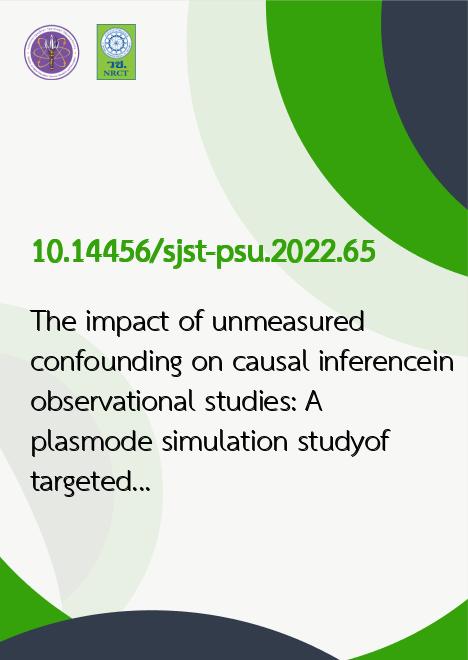
|
The impact of unmeasured confounding on causal inferencein observational studies: A plasmode simulation studyof targeted maximum likelihood estimation |
|---|---|
| รหัสดีโอไอ | |
| Creator | 1. Lateef Amusa 2. Temesgen Zewotir 3. Delia North |
| Title | The impact of unmeasured confounding on causal inferencein observational studies: A plasmode simulation studyof targeted maximum likelihood estimation |
| Publisher | Research and Development Office, Prince of Songkla University |
| Publication Year | 2565 |
| Journal Title | Songklanakarin Journal of Science an Technology (SJST) |
| Journal Vol. | 44 |
| Journal No. | 2 |
| Page no. | 474-480 |
| Keyword | TMLE, IPW, odds ratio, unobserved confounding, plasmode simulation |
| URL Website | https://rdo.psu.ac.th/sjst/index.php |
| ISSN | 0125-3395 |
| Abstract | Unmeasured confounding can cause considerable problems for causal inference in observational studies and threatenthe validity of the estimates of causal treatment effects. We investigate the robustness of a relatively new causal inferencetechnique, targeted maximum likelihood estimation (TMLE), in terms of its robustness against the impact of unmeasuredconfounders. We benchmarked TMLE's performance with the inverse probability of treatment weighting (IPW) method. Weutilized a plasmode-like simulation based on variables and parameters from the Study to Understand Prognoses and Preferencesfor Outcomes and Risks of Treatments (SUPPORT). We evaluated the accuracy and precision of the estimated treatment effects.Though TMLE performed better in most of the scenarios considered, our simulation study results suggest that both methodsperformed reasonably well in estimating the marginal odds ratio in the presence of unmeasured confounding. Nonetheless, theonly remedy to unobserved confounding when making causal inference is by controlling for as many as possible confoundersbecause not even TMLE can provide a safeguard against bias from unmeasured confounders. |
